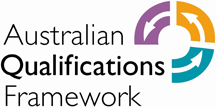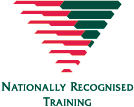Frequently Asked Questions
Here are the answers to the most common questions. If we have not answered your question here just use the contact button and ask!
- Is AQI a Registered Training Organisation?
- How long will the online courses take?
- How much time per week should I study?
- Who can help me?
- Who can enrol in our online courses?
- Who can apply for Recognition of Prior Learning (RPL)?
- How does Recognition of Prior Learning (RPL) work?
- Can I get Credit Transfers for previous training or study?
- What is competency-based training and assessment?
- How is Competency Based Training different from other training I have done in the past?
- How do I submit assessment?
- What is a National Training Package?
- What is a unit of competency?
- What is a unit of Micro-credential?
- What is a qualification?
- What is a statement of attainment?
Is AQI a Registered Training Organisation?
Yes, our RTO code is 40744. You will find all our registration details and the Nationally Recognised Qualifications we teach and provide RPL (Recognition of Prior Learning) for on the government website www.training.gov.au.
How long will the online courses take?
The Diplomas all have 12 units and should take a year to 18 months. If you cannot finish in that time you may apply for an extension. Where there is a significant amount of Recognition of your Prior Learning (RPL) the time frame is greatly reduced.
How much time per week should I study?
That depends on how quickly you want to finish. Most students will comfortably finish in a year if they study 10 hours per week. Again this is much quicker through RPL.
Who can help me?
From your first enquiry you have your own Education Counsellor who will help you select your units, identify any RPL and create a Study and Recognition Plan for you. This Counsellor will be your main point of contact for any questions outside of your learning material, throughout your Diploma.
For each unit you will have your own teacher who will help you with the learning material. You can email questions to your teacher at anytime.
Who can enrol in our online courses?
Anyone who meets the entry requirements outlined on the courses brochure can enrol.
Who can apply for Recognition of Prior Learning (RPL)?
Anyone who believes they already have the skills and knowledge to achieve all or part of a Diploma can apply for RPL. There is an RPL self-assessment available on the RPL page to help you with this.
How does Recognition of Prior Learning (RPL) work?
This is a thorough but organised process.
- You complete the RPL self-assessment form (5-10 minutes) and submit this with a CV/Resume (it does not need to be perfect) to enquiries@aqi.edu.au .
- An Education Counsellor (a fully qualified teacher) will contact you and work with you to discuss and create a Study and Recognition Plan, identifying as many RPL units as possible. This discussion will help you make informed decisions about your future pathway in education and training.
- If you are comfortable to go ahead – you enrol!
You then work though each RPL unit answering questions and providing evidence of work done in the workplace. This evidence could be in the form of samples of work,
- position descriptions, or observation reports. Evidence is generally submitted in electronic form with confidential parts blanked out.
- Finally, you provide contact details of a referee who can verify your evidence – generally your direct manager.
Your teacher works closely with you every step of the way with you in this.
Can I get Credit Transfers for previous training or study?
Yes if you have completed units that may be relevant to your Study and Recognition Plan, send certified copies of your results to your teacher for consideration. They will check currency on the government register (www.training.gov.au) and tell you whether they can be used in your current enrolment.
What is competency-based training and assessment?
Competency based training and assessment is the method used in vocational education and training to train and assess a student against a particular standard. If the student achieves that standard they are deemed to be competent. The standard is based on the skills required to competently complete a task in a workplace. Students are not graded i.e. they are not given a grade or compared to other students. Students do not have to spend a minimum amount of time training; once a student is deemed competent the training is complete. Limited resits are available to enable students to achieve the required level of competency.
How is Competency Based Training different from other training I have done in the past?
With competency-based assessment all students have to achieve the same standard to be deemed competent. This is not a percentage mark but a standard deemed by Australian industry to demonstrate competency.
How do I submit assessment?
RPL evidence is submitted online or sighted in a face-to-face meeting. For study units, your assessment information is provided online and will tell you clearly how to submit assessments. Assessments are submitted online through the learning management system.
What is a National Training Package?
It is a set of nationally endorsed standards and qualifications used to recognise and assess the skills and knowledge people need to perform effectively in the workplace.
What is a unit of competency?
A unit of competency is part of a training package that specifies the required industry knowledge and skill for a particular job role or task, and the application of that knowledge and skill to the standard expected in the workplace. Detailed units of competency can be found by searching the national training register at www.training.gov.au.
What is a unit of Micro-credential?
A micro-credential is a small ‘chunk’ of learning on a specific topic. It may be formally recognised as any piece of a unit up to a full competency unit on the National Register www.training.gov.au. It may also be just a short course and not formally recognised. All micro-credentials at the Australian Qualifications Institute are part of, or a complete competency unit designed to build towards a qualification should you choose. You receive a digital badge for each micro-credential you successfully complete.
What is a qualification?
It is a formal certification. It shows that a person has achieved certain learning outcomes or competencies.
What is a statement of attainment?
It is a statement given to a person confirming that the person has satisfied the requirements of units of competency or modules specified in the statement. A statement of attainment is issued to a student if they complete one or more units of competency but do not complete a whole qualification.


